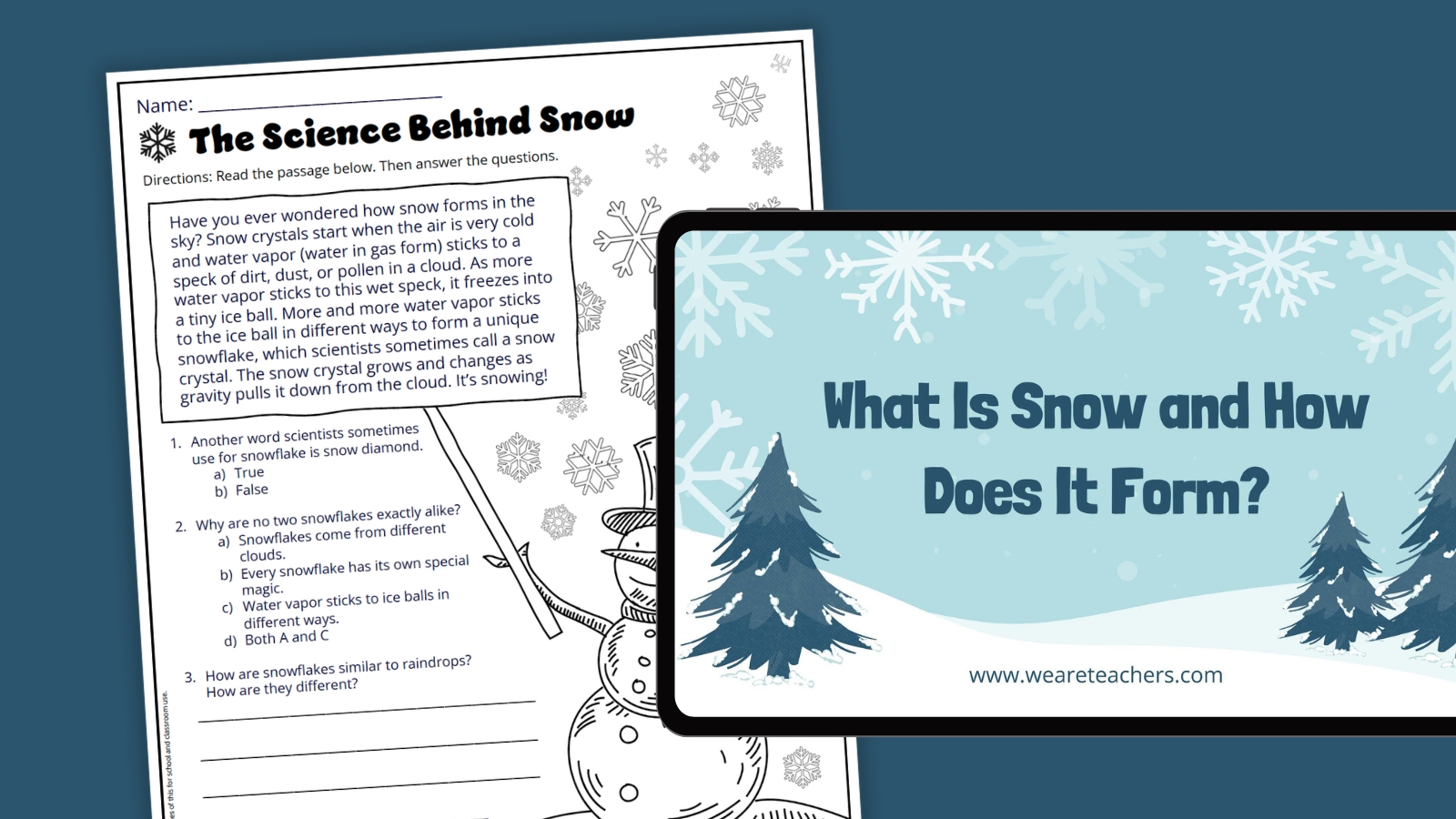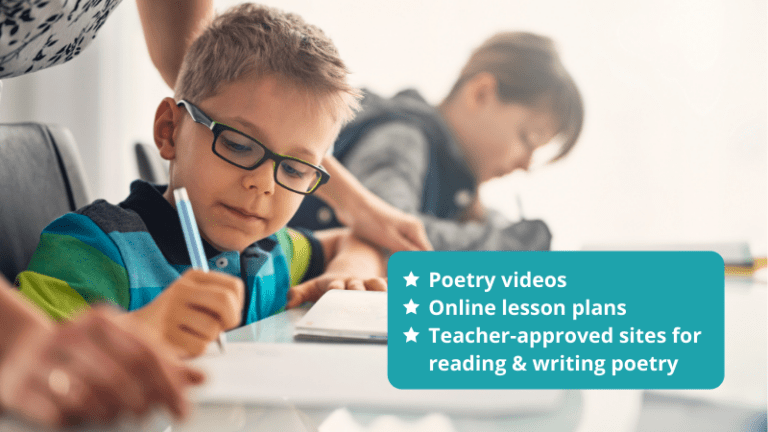There’s nothing more exciting than looking out the classroom window and seeing the first snowflakes of the year. (Sorry, whatever other lessons you had planned today are ruined!) Once the squeals of delight die down, the question “How does snow form?” is an awesome one to explore for students of all ages. To help you get prepared for whenever that perfect moment occurs, we’ve gathered kid-friendly explanations, facts, and activities related to snow in one handy place.
Don’t miss our free snow science downloadable bundle! Grab ready-to-use Google Slides with snow vocabulary and facts. Plus, get a “How Does Snow Form?” reading comprehension worksheet.
Jump to:
- What is snow and how does it form?
- How Does Snow Form? Videos
- Facts About Snow
- Children’s Books About Snow
- Snow Worksheet, Activities, and Lesson Plan
- More Links and Resources About Snow
What is snow and how does it form?
It’s easy to talk about how snow is cold, wet, and fun. It’s a little harder to explain how snow happens! Lean on our free Google Slides to get the discussion going.
What is snow?
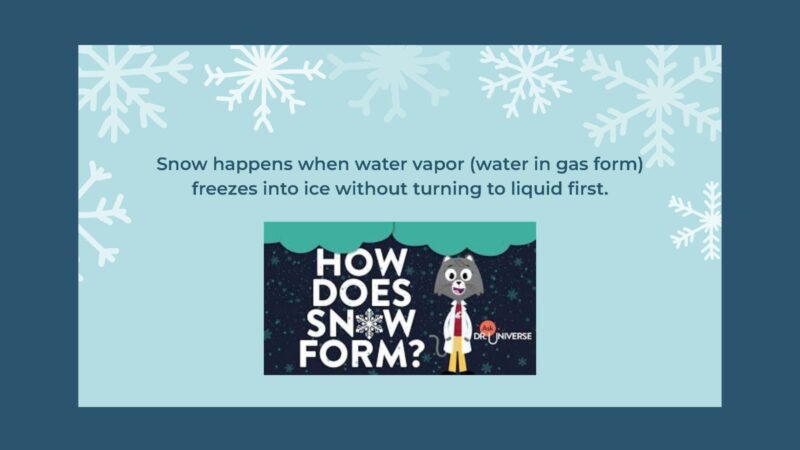
Snow is ice crystals that fall from the sky.
Snow happens when water vapor (water in gas form) freezes into ice without turning to liquid first.
How does snow form?
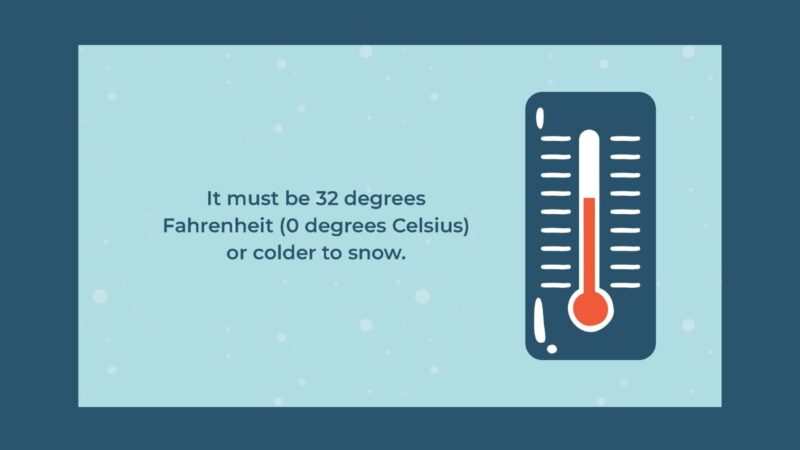
How does snow form? It all starts up in the clouds on a cold day. It must be 32 degrees Fahrenheit (0 degrees Celsius) or colder to snow.
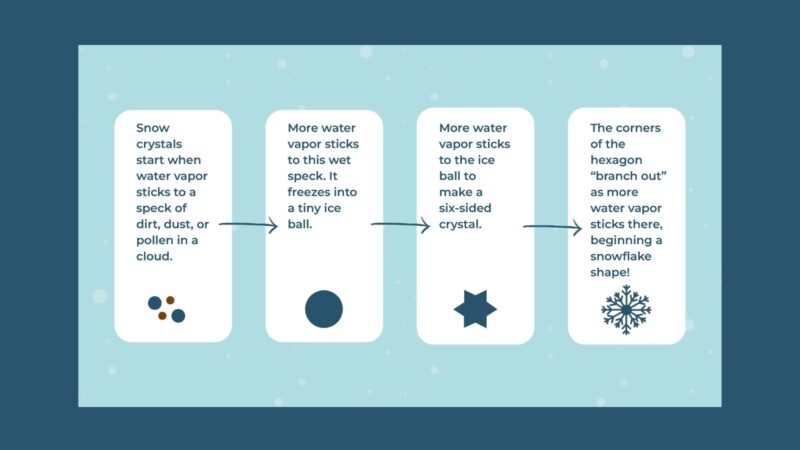
Snow crystals start when water vapor sticks to a speck of dirt, dust, or pollen in a cloud. As more water vapor sticks to this wet speck, it freezes into a tiny ice ball. More and more water vapor sticks to the ice ball to make a six-sided crystal. The corners of the hexagon “branch out” as more water vapor sticks there, beginning a snowflake shape.
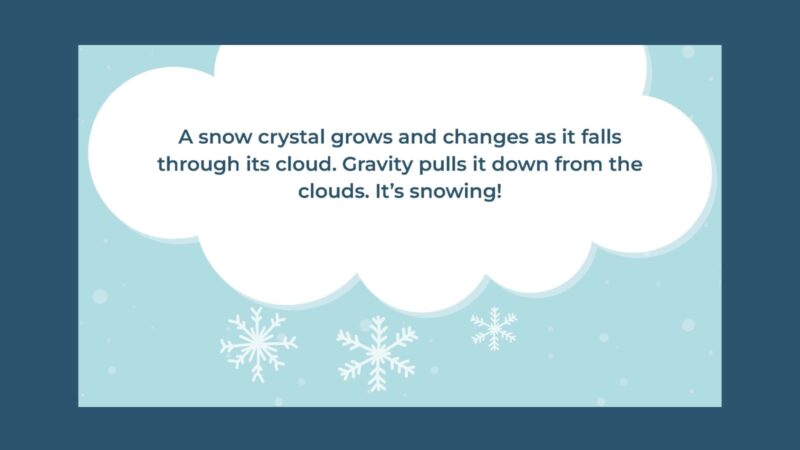
A snow crystal grows and changes as it falls through its cloud. Gravity pulls it down from the clouds. And then it’s snowing!
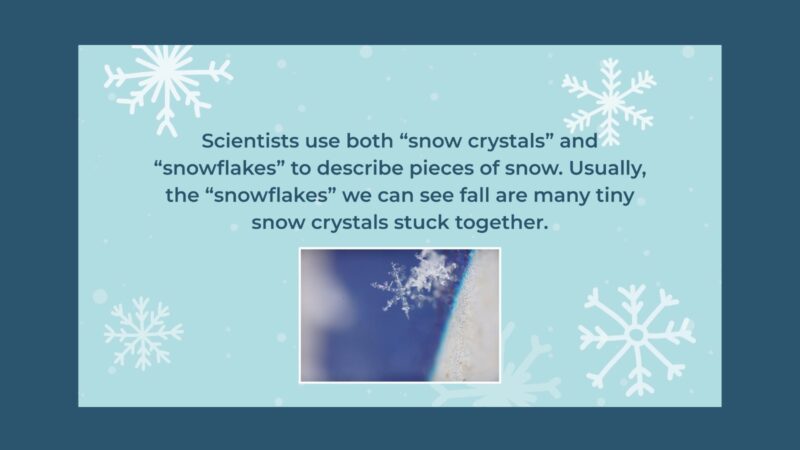
Scientists use both “snow crystals” and “snowflakes” to describe pieces of snow. Usually, the “snowflakes” we can see fall are many tiny snow crystals stuck together.
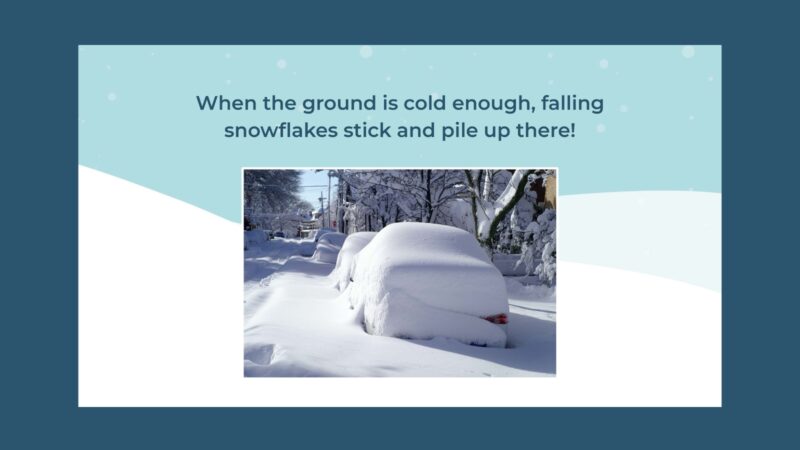
When the ground is cold enough, falling snowflakes stick and pile up there!
How does snow affect our climate?
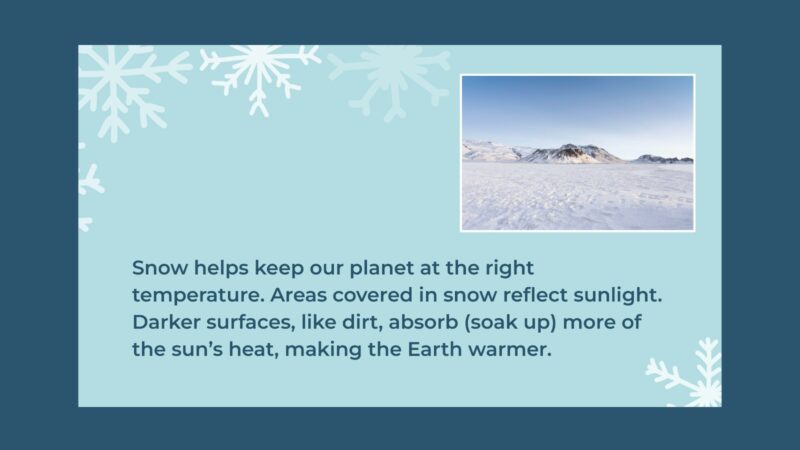
Snow plays a crucial role in Earth’s ecosystem.
Snow helps keep our planet at the right temperature. Areas covered in snow reflect sunlight. Darker surfaces, like dirt, absorb (soak up) more of the sun’s heat, making the Earth warmer.
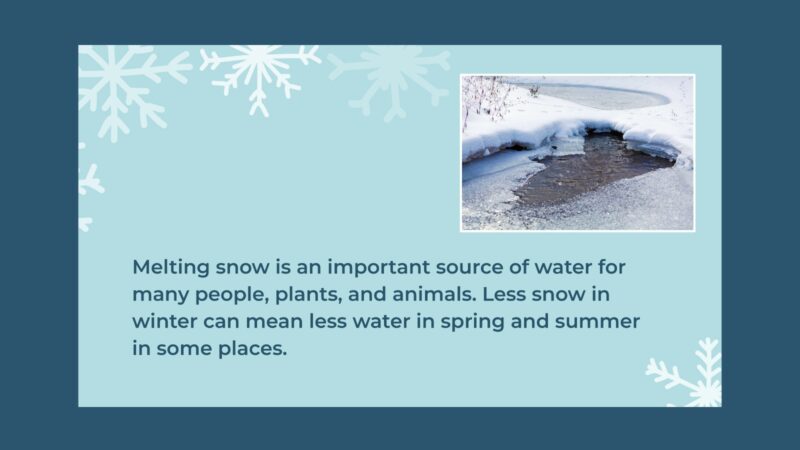
Melting snow is an important source of water for many people, plants, and animals. Less snow in winter can mean less water in spring and summer in some places.
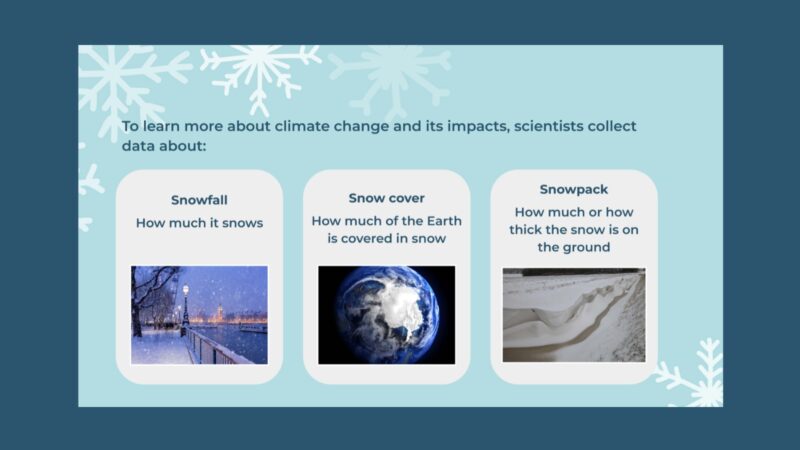
To learn more about climate change and its impacts, scientists collect data about:
- Snowfall—how much it snows
- Snow cover—how much of the Earth is covered in snow
- Snowpack—how much or how thick the snow is on the ground
How Does Snow Form? Videos
Need more help explaining snow to kids? Here are a few of our favorite videos for different ages.
How Does Snow Form? from teacher expert with We Are Teachers
How Does Snow Form? from Northwest Public Broadcasting Kids
How Is Snow Formed? And Why Is It White? from Museum of Science
The Science of Snowflakes from TED-Ed
Josh King, Arctic Scientist, from Exploring by the Seat of Your Pants
Facts About Snow
There’s “snow” much to learn about this magical weather phenomenon. Share these snow facts with your whole class, or divide kids into small groups and use them as inspiration for kid-driven research, oral or video presentations, posters, or Canva projects.
Where does it snow?
Snow covers about one-third of Earth’s land area for some part of each year.
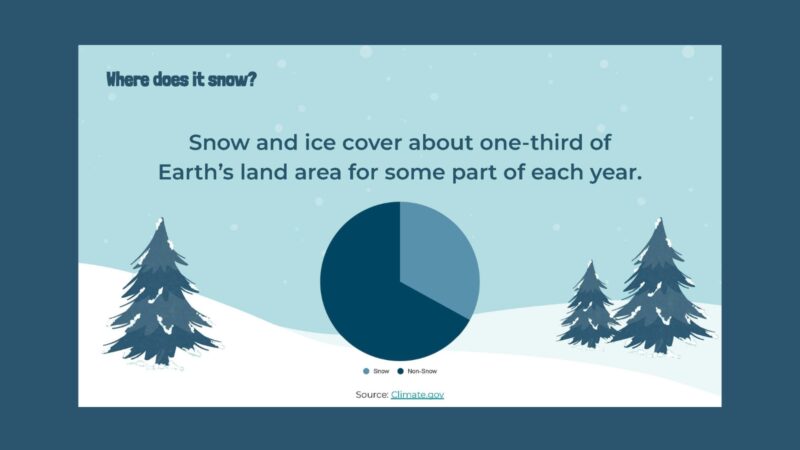
Source: Climate.gov
Mount Rainier, Washington, is the snowiest spot in the United States. It gets almost 56 feet of snow per year!
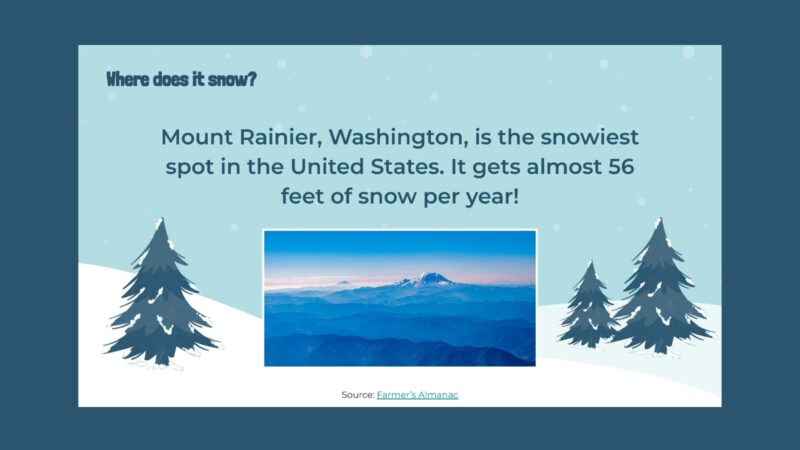
Source: Farmers’ Almanac
Japan is one of the snowiest countries in the world.
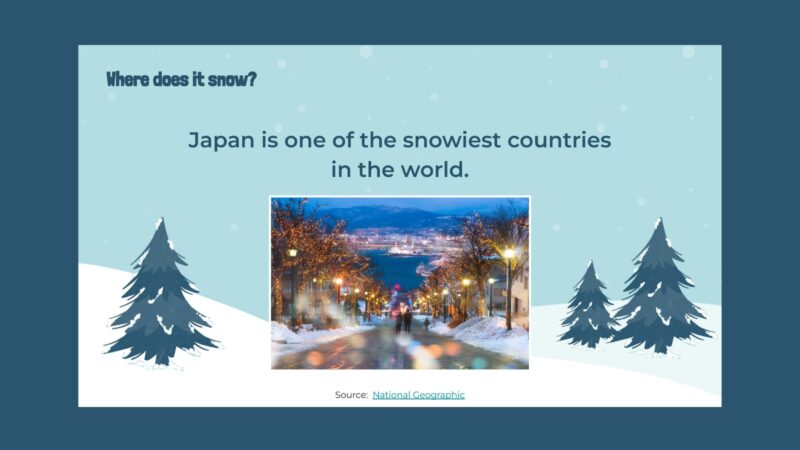
Source: National Geographic
Types of Snowy Weather
A snowstorm is any storm in which snow falls.
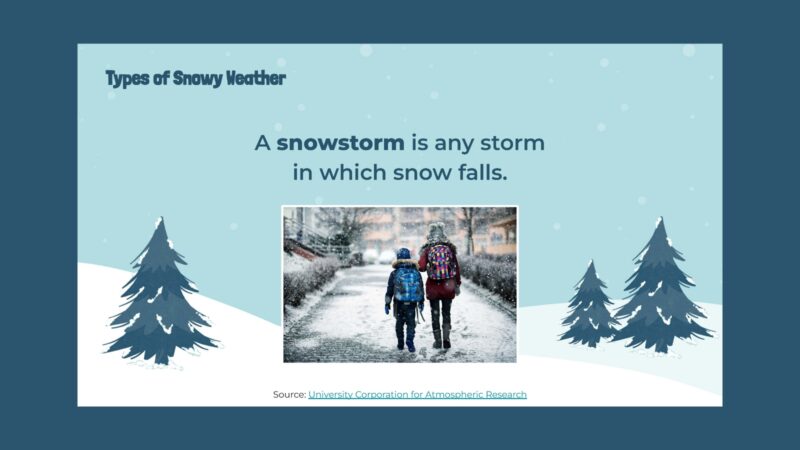
Source: University Corporation for Atmospheric Research
A snow flurry is when a little snow falls but doesn’t accumulate, or pile up without melting.
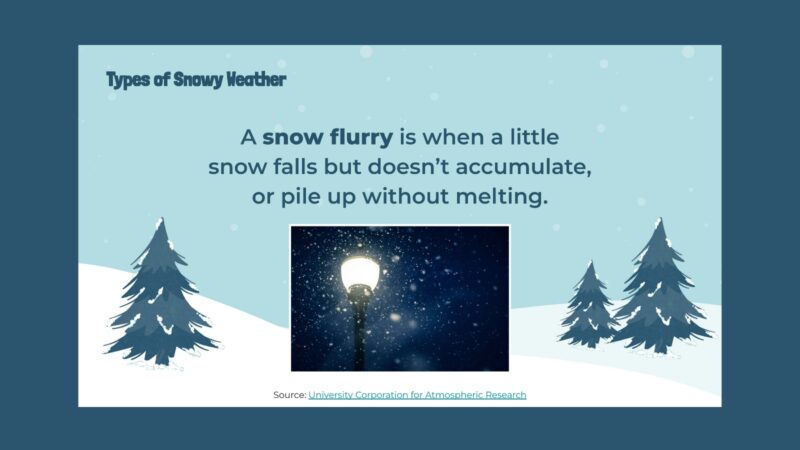
Source: University Corporation for Atmospheric Research
A snow shower is when it snows for only a short amount of time.
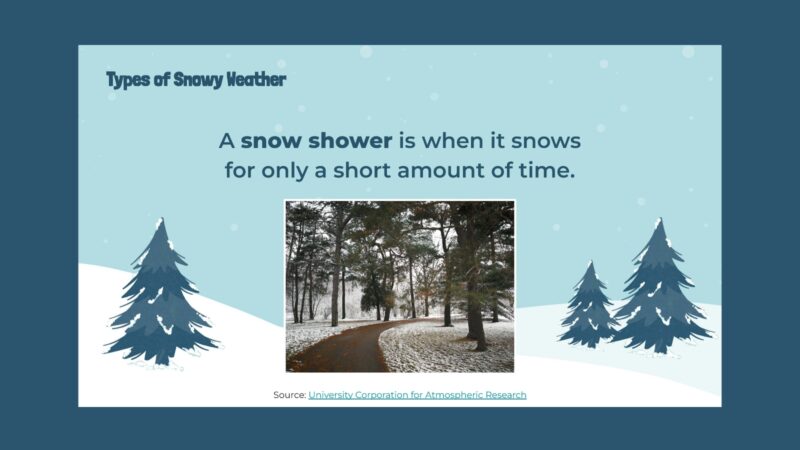
Source: University Corporation for Atmospheric Research
A blizzard is a major snowstorm with high winds—at least 35 mph. It lasts for at least three hours.
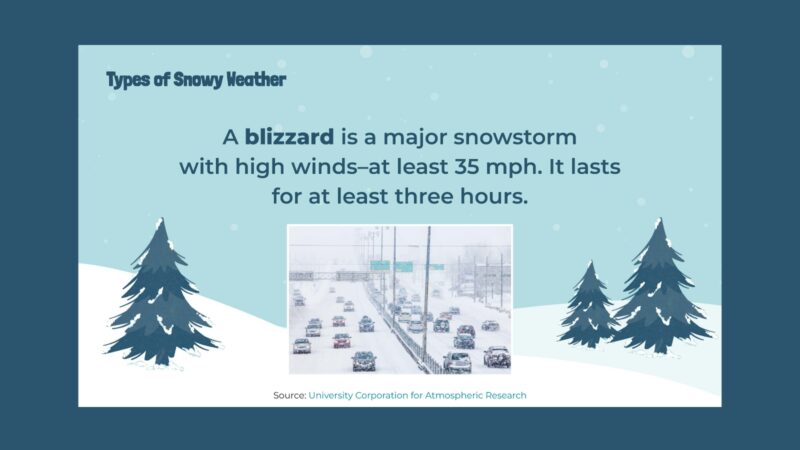
Source: University Corporation for Atmospheric Research
Types of Snowflakes
Snowflakes always have six sides and six points. This is due to the chemistry of water molecules.
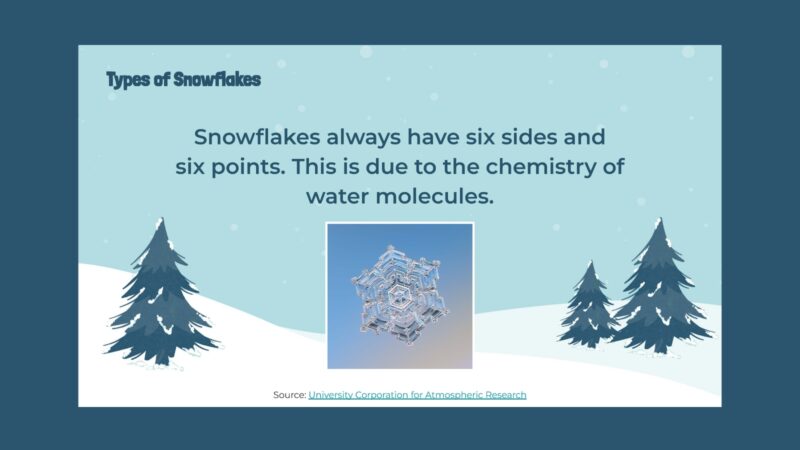
Source: University Corporation for Atmospheric Research
Scientists have names for over 30 shapes of snowflakes.
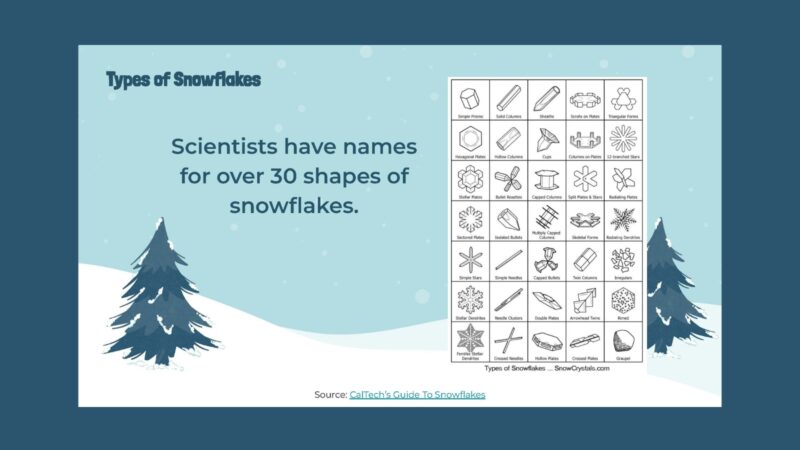
Pro tip: If snow is in the forecast, stick some sheets of black paper or felt in the freezer a few hours ahead of time. Let snowflakes fall on the black surface for students to study with magnifying glasses.
Source: CalTech’s Guide To Snowflakes
The most well-known snowflake type is a stellar dendrite. (Stellar means related to a star, and dendrite means tree-like.)
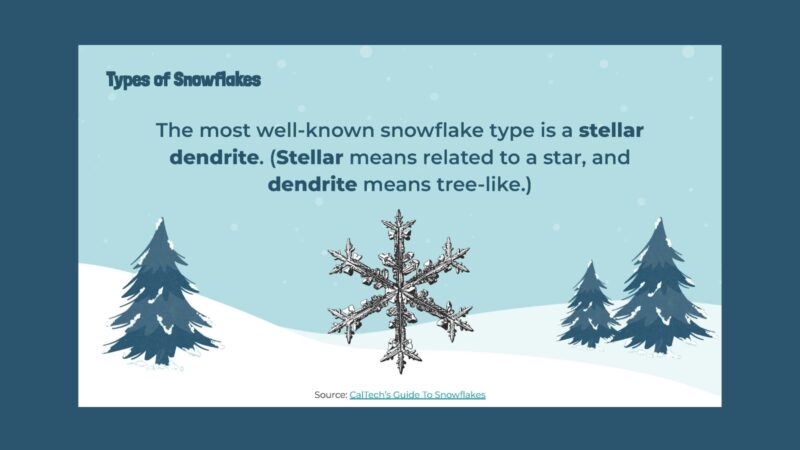
Source: CalTech’s Guide To Snowflakes
Wilson Bentley, nicknamed “Snowflake Bentley,” was the first person to photograph a snow crystal up close by attaching a camera to a microscope in 1885.
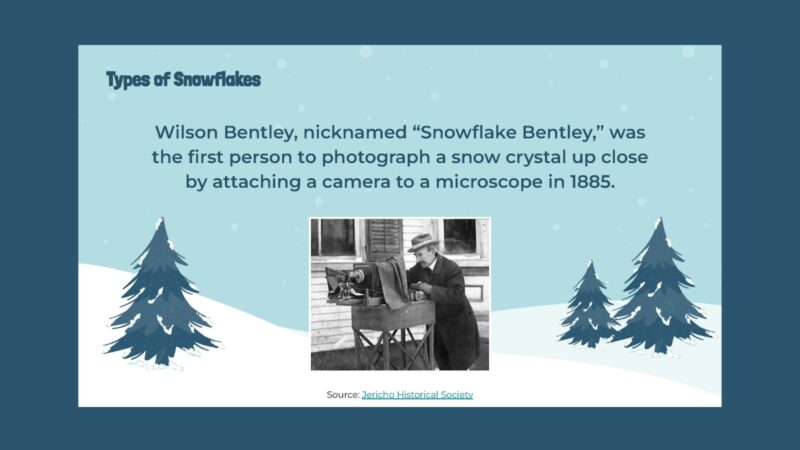
Source: Jericho Historical Society’s resource page about Snowflake Bentley. Check them out for lots more information, digital images, and links!
More Fun Facts About Snow
Snow is actually translucent—almost see-through. It looks white because snowflakes reflect all the colors of light, which together look white.
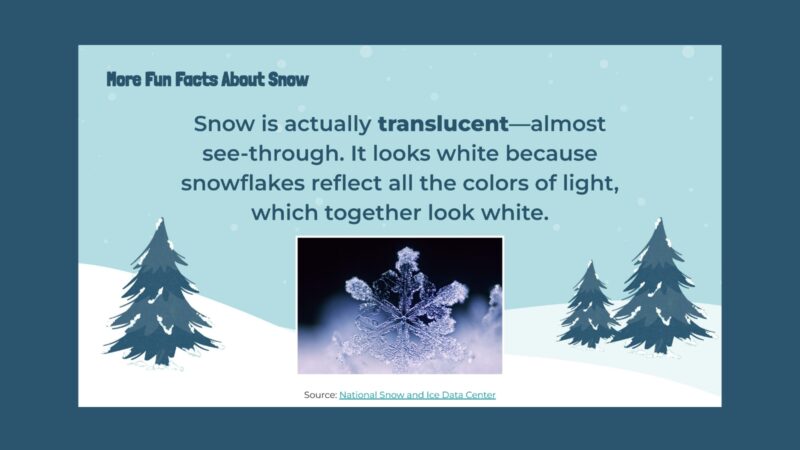
Source: National Snow and Ice Data Center
It can seem quieter right after it snows. A layer of fresh snow on the ground absorbs (soaks up) sound.
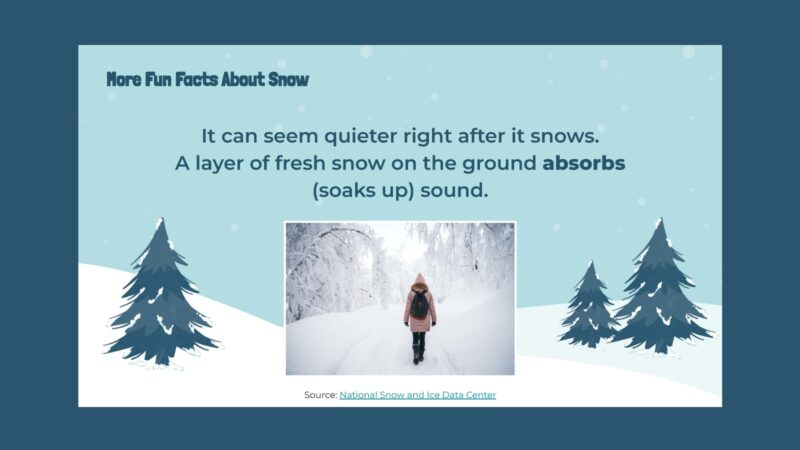
Source: National Snow and Ice Data Center
Snow is a good insulator. Fluffy snow on the ground includes lots of trapped air, so it can act like a warm blanket. Some animals burrow under the snow to stay warmer.
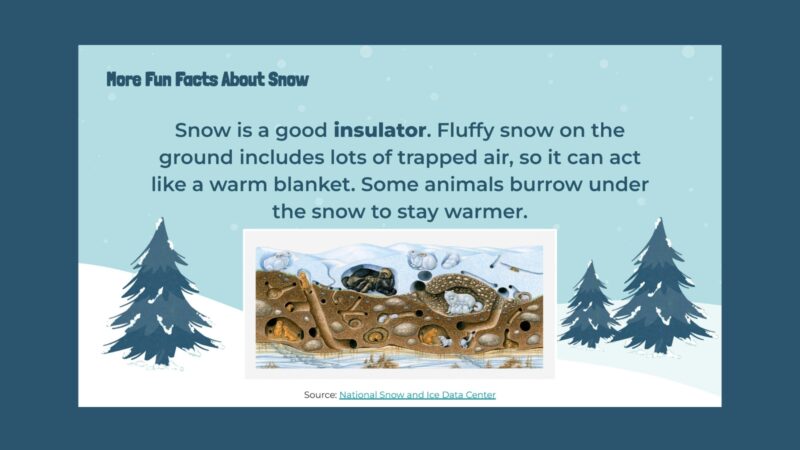
Source: National Snow and Ice Data Center
Japanese macaques, also called “snow monkeys,” love to make snowballs!
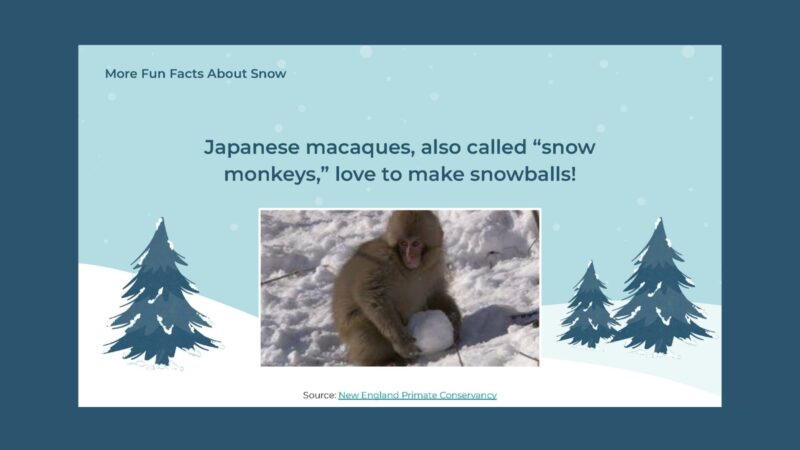
Source: New England Primate Conservancy
Share this video of a young Japanese macaque rolling a snowball to make your students smile!
Children’s Books About Snow
We’ve got a whole list of awesome picture books about winter, but these recent favorites are specific to snow!
Hello World! Snow by Jill McDonald
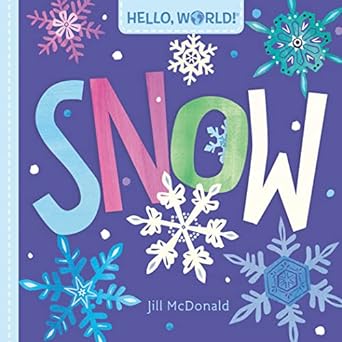
Perfect for your curious littles in preschool and kindergarten. Don’t be fooled by the fact that it’s a board book—it’s got lots of great info for older kids too.
Buy it: Hello World! Snow on Amazon
The Story of Snow: The Science of Winter’s Wonder by Mark Cassino with Jon Nelson, Ph.D.
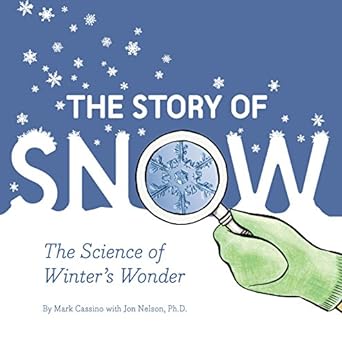
This is our favorite straightforward read-aloud for explaining how snow forms and about different types of snowflakes. The National Park Service offers a free lesson plan using this book.
Buy it: The Story of Snow: The Science of Winter’s Wonder on Amazon
Curious About Snow by Gina Shaw
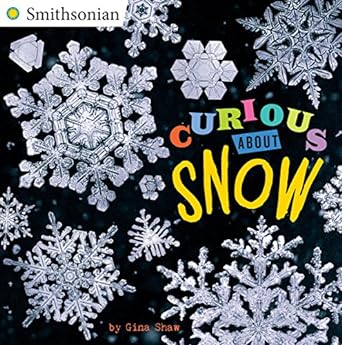
Here’s a one-stop informational read for everything snow—science, history, wow-worthy facts, and more.
Buy it: Curious About Snow on Amazon
Just One Flake by Travis Jonker
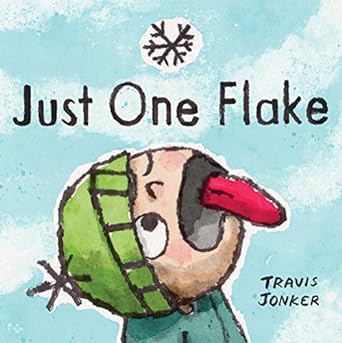
All ages will appreciate this hilarious account of one child’s desperate wish to catch a snowflake on their tongue.
Buy it: Just One Flake on Amazon
Just Snow Already! by Howard McWilliam
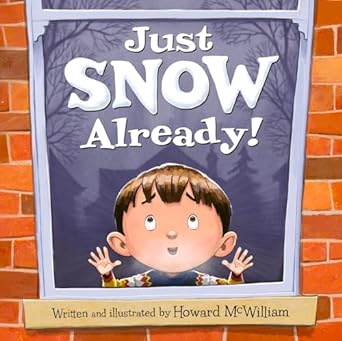
This one goes out to all the kiddos who can’t think of anything else when they know snow is on the way. Share it while you’re waiting for snow, or as a fun introduction to snowy weather forecasting.
Buy it: Just Snow Already! on Amazon
Snow Worksheet, Activities, and Lesson Plan
Here are just a few of our favorite snow activities that are easily adaptable for different ages.
Free Worksheet: The Science Behind Snow
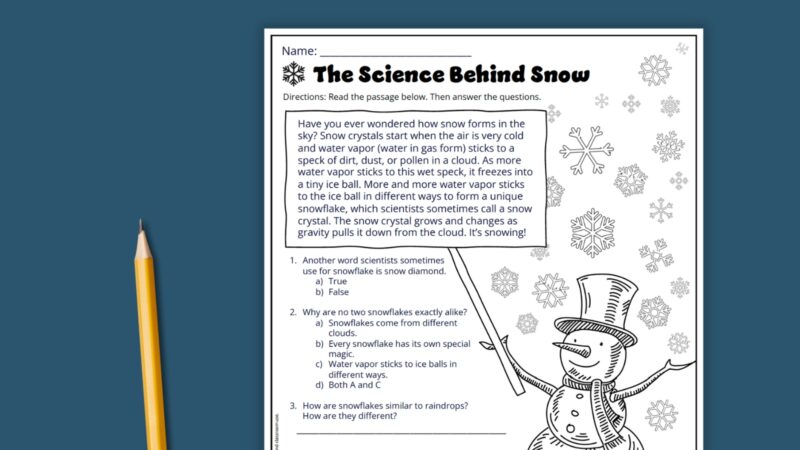
Download this free snow worksheet for students to work on reading comprehension skills as they learn about snow.
Try it: Just fill out the form to get your free snow science resource bundle, including this worksheet.
Lesson Plan: How Does Snow Form?
Use this low-prep lesson plan from the American Chemical Society to help kids understand how snowflakes form. They will create their own simple model using cotton swabs.
Activity: 7 Ways To Draw a Snowflake (Free Printable + Video)
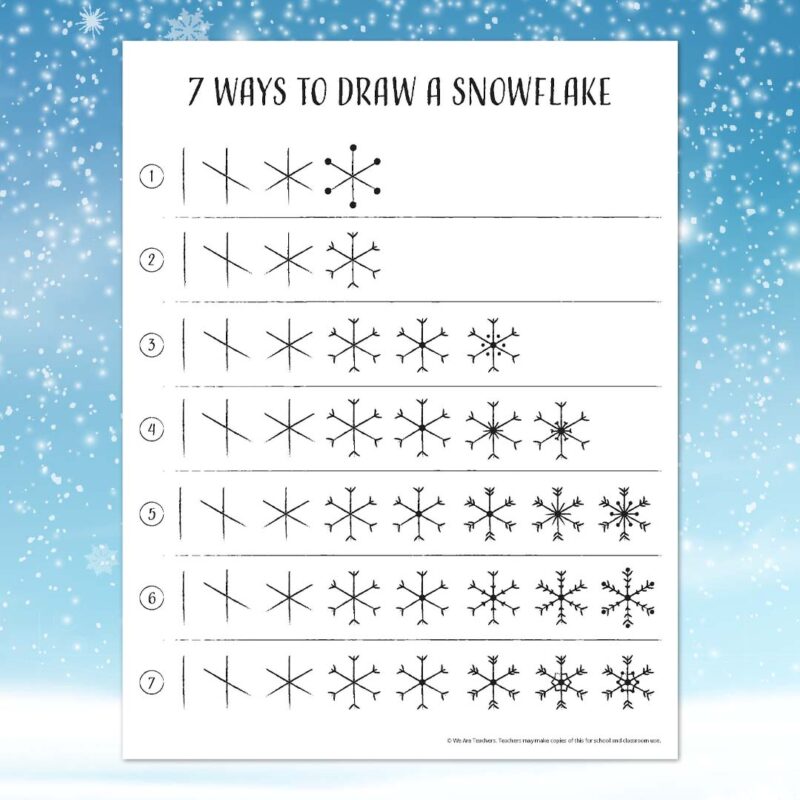
Perfect for an art activity or fast finishers, this printable sheet plus video shows kids how to draw seven different types of snowflakes.
Learn more: How To Draw a Snowflake (Printable Sheet + Video)
Webcams: Check Out Snowy Weather on Mount Washington
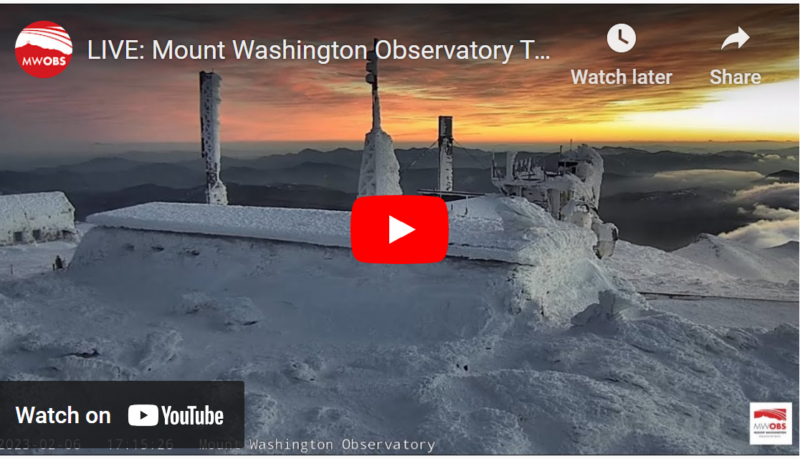
No snow near you? No problem! The weather station at the Mount Washington Observatory hosts several webcams you can check out anytime with your class. They also offer tons of weather data for you to browse with kids.
Try it: Mount Washington Observatory Webcams
Activity: “Should You Eat Snow?” Persuasive Writing Prompt
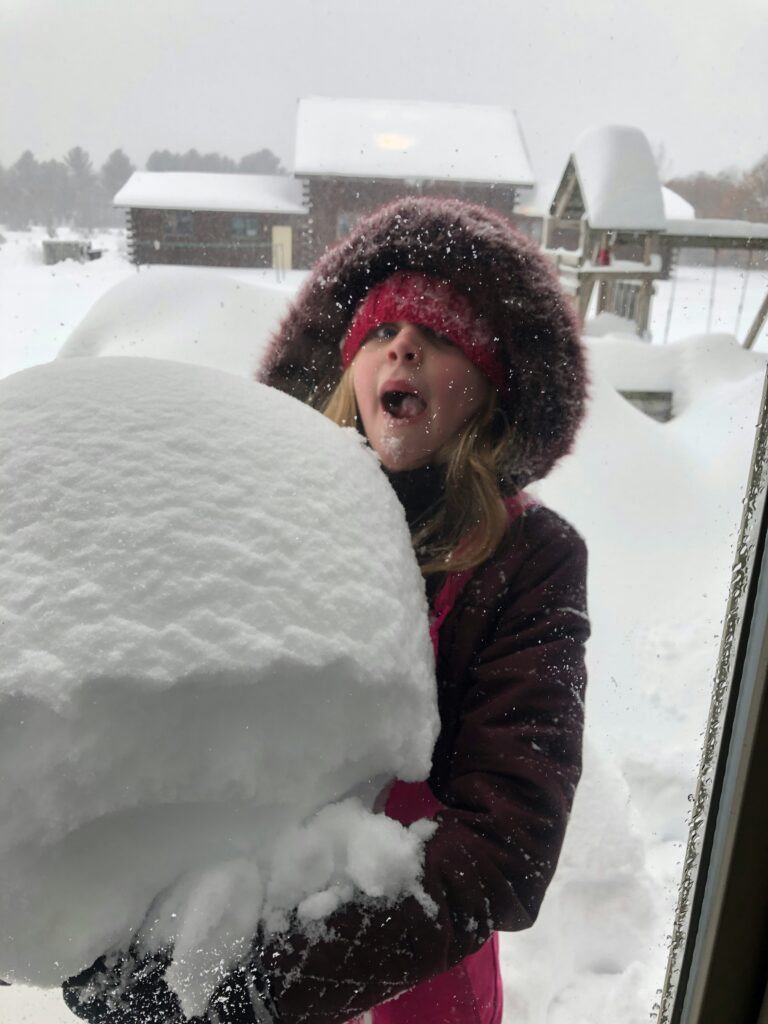
Have students research the question “Should you eat snow?” (Spoiler: Yes, it’s deliciously cold, but it almost definitely contains more than just water.) They can present their findings as a persuasive sign, letter or pro-and-con list, or tip sheet! Older students will enjoy this NPR article about whether eating snow is safe.
Activity: Coffee Filter Snowflakes
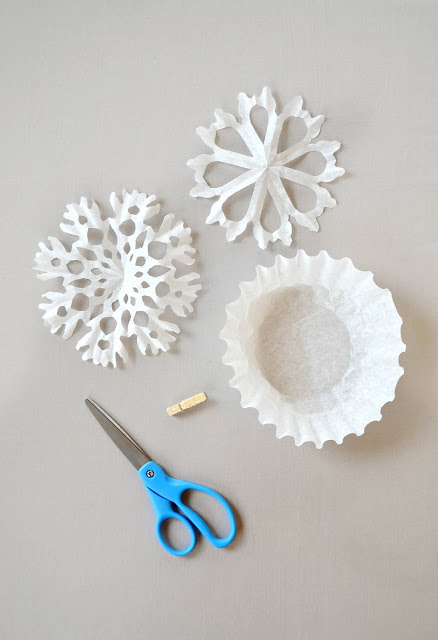
Making snowflakes is a classic classroom activity, but have you ever tried using coffee filters instead of paper? It’s so convenient to start with a round form. Challenge older students to make their snowflakes hexagonal.
Try it: Coffee Filter Snowflakes at The Pink Couch
More Links and Resources About Snow for Teachers
Whether you’re a snow lover or not, you might need to boost your own background knowledge to feel comfortable teaching a science lesson on snow. Make these reliable resources your first stop. (We used them to help create this page!)
National Snow and Ice Data Center
This University of Colorado–based organization’s Quick Facts About Snow page is so handy and interesting! Go deeper with their explanation of the science of snow.
University Corporation for Atmospheric Research
This expert organization’s Center for Science Education articles about snow are great for teacher background knowledge or as reading material for older students.
Environmental Protection Agency’s Climate Change Indicators
Start at the EPA’s Snow and Ice page for more information about how snow and ice can be used to provide climate change data, and why this matters.
CalTech’s Guide to Snowflakes
Browse images and descriptions of various types of snowflakes. This is an especially awesome resource to connect snowflakes to math by learning about shapes and patterns.
Get Your Free How Does Snow Form? Worksheet and Snow Google Slides for Kids
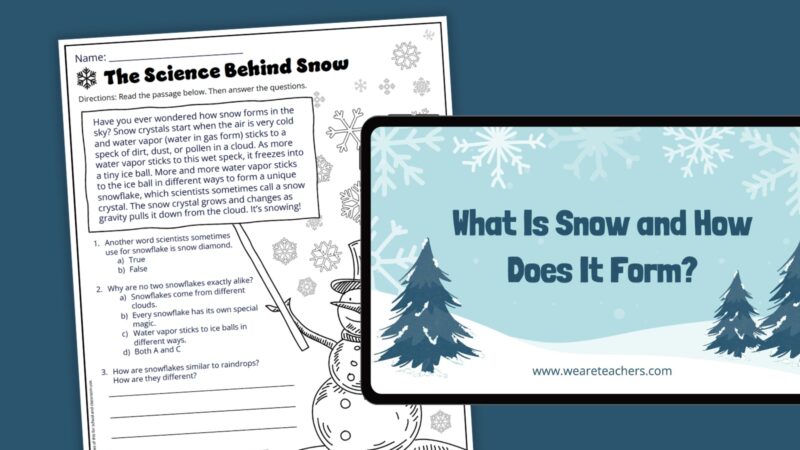
Just click the button below to fill out the form and get instant access to a free bundle of snow teaching resources, including Google Slides with kid-friendly explanations and facts, and a How Does Snow Form? worksheet.
